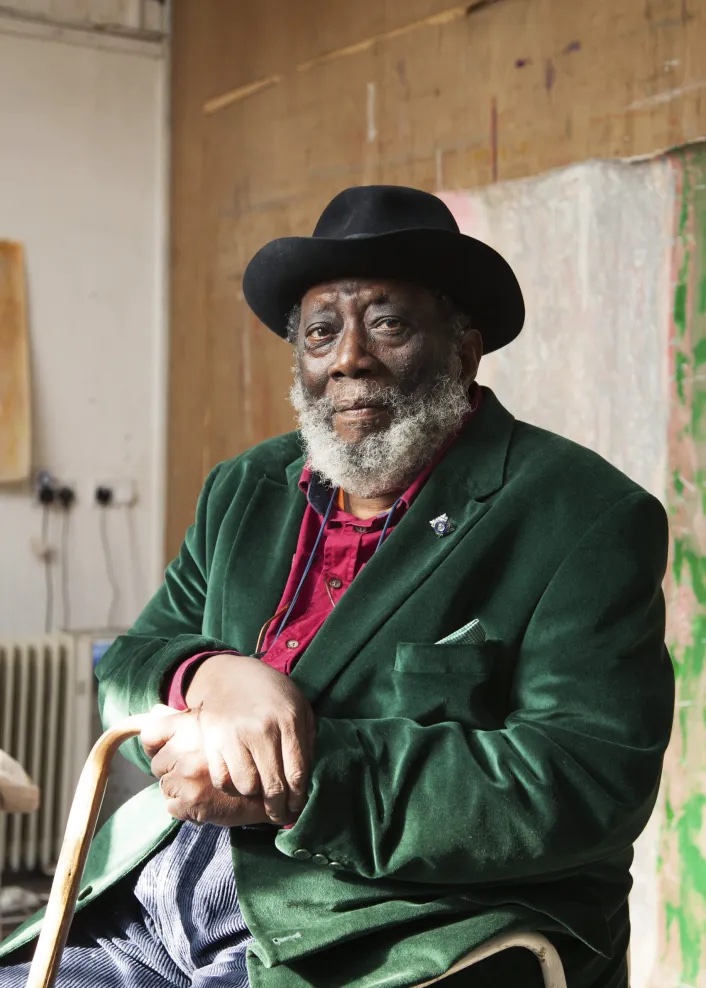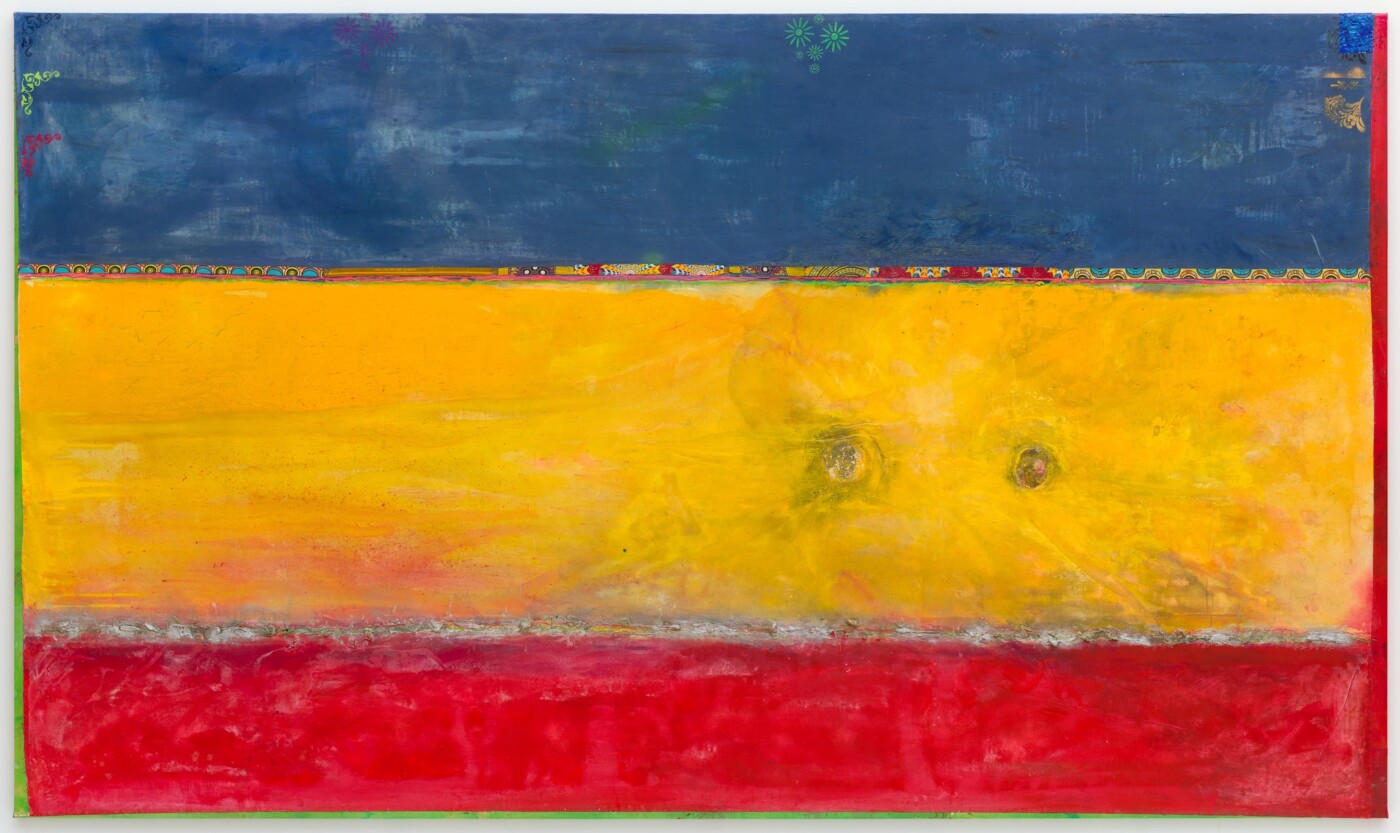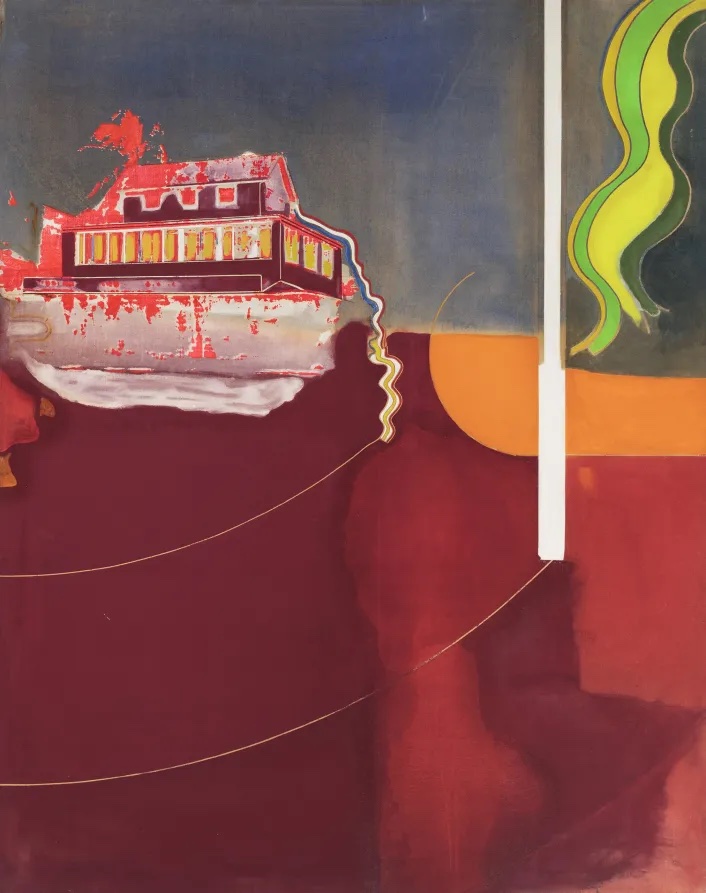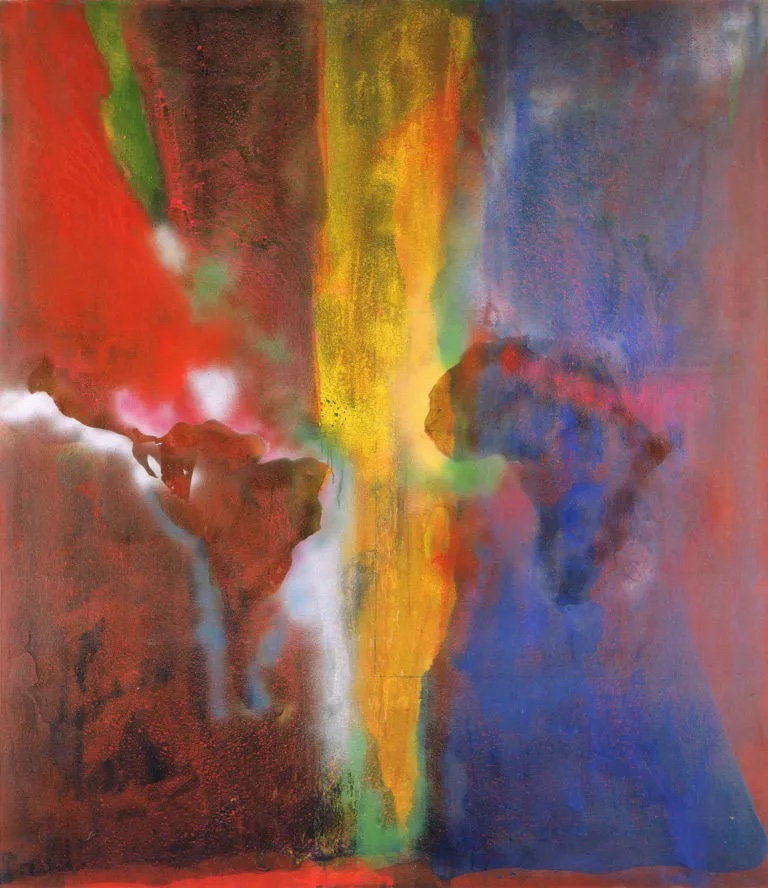San Francisco is getting to know Frank Bowling. In the last several years, both the Fine Arts Museums of San Francisco and the San Francisco Museum of Modern Art purchased significant works by the artist. FAMSF bought Bowling’s 1970 “Penumbra,” a 23-foot-wide canvas that mixes figuration and abstraction, and SFMOMA acquired Bowling’s 2018 “Elder Sun Benjamin,” which incorporates photographs of Bowling’s son into the large, boldly colored canvas.
Now, “Frank Bowling: The New York Years 1966-1975,” a major solo exhibition of Bowling’s work at SFMOMA, provides an in-depth focus on the British Guyanese artist who played a substantial role in several major art movements. The exhibition primarily focuses on a seminal period of Bowling’s career, that is, the 10 years Bowling spent in New York, when abstract expressionism was in ascendance and the direction of Black artistic practice was subject to discussion and debate.

The exhibition, co-organized with the Museum of Fine Arts Boston, marks the first major showing of Bowling’s work in some 40 years. To the 35 Bowling’s paintings that were on display in Boston, SFMOMA has added 11 artworks, including some by Bowling’s contemporaries in abstract expressionism — Sam Gilliam, Larry Rivers and Jasper Johns among them — others highlighting the 89-year-old still-active artist’s more recent work.
Bowling’s paintings are often vividly rooted in place. Early works on view evoke scenes of Guyana, such as the figurative 1963 “Beggar, No. 1 & 2.” Others include visions of his mother’s building, Bowling’s Variety Store, which at times are sharply defined and at others, float, dimly seen through layers of vivid paint, lurking evocations of a time and place that continued to draw him.
Also included are photographs, videos and writings on other aspects of Bowling’s career, including a trip to Guyana, sketches, an educational lecture and archival materials from “5+1,” the important exhibition Bowling organized at Stony Brook University in New York in 1969 to spotlight five leading African American artists and his own work.
Bowling’s “map” paintings use the specificity of place, silhouettes of South America and Africa and Guyana to evoke colonialist statements or, in some cases, the Middle Passage which brought countless slaves from Africa to distant shores.
Others Bowling paintings employ a vivid energetic yellow shape to cleave the deep colors on each side. Through repeated working on the painted surface — through thin washes of color, spray-painted outlines of continents, recurrent silk-screened images and paintings poured from a tilting platform onto canvases from varying heights — Bowling creates colors which are as deep as they are unexpected, described by one observer as “an oceanic sea of color.”
“Frank Bowling: The New York Years 1966-1975″ is on view daily (except closed Wednesdays) at the San Francisco Museum of Modern Art, 151 Third St., S.F., through Sept. 10, 2023. Admission is $19-$25 with discounts for groups and City Pass holders. Call (415) 357-4000 or visit sfmoma.org. A free workshop, “Paint Possibilities,” is from 3 to 7:30 p.m. July 6, a free First Thursday, in the Koret Education Center on the museum’s second floor.


